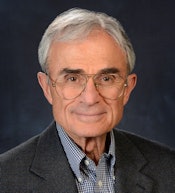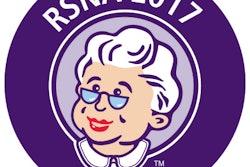
Growth in medical imaging use may have been rapid in the early 2000s, but that trend is definitely over, according to a study led by Dr. David C. Levin of Thomas Jefferson University and published in the April issue of Health Affairs.
The findings indicate that policies intended to curb imaging use have been quite successful -- so much so that the use rates for most modalities are either flat or in a downward trajectory, Levin told AuntMinnie.com.
 Dr. David C. Levin from Thomas Jefferson University.
Dr. David C. Levin from Thomas Jefferson University."In the last few years, the imaging utilization rate per 1,000 Medicare beneficiaries has not only leveled off, but it's actually started to go down a bit," he said. "Going forward, there are many factors that could spur additional imaging use, but also others factors that will restrict it -- which could essentially result in a plateau."
Growth spurt
Imaging use grew rapidly in the early 2000s for a number of reasons, Levin wrote, along with co-authors Dr. Laurence Parker and Dr. Vijay Rao, also of Thomas Jefferson University, and Charles Palit, PhD, from the University of Wisconsin-Madison (Health Affairs, April 2017, Vol. 36:4, pp. 663-670):
- Technological improvements in CT and MRI allowed not only radiologists but also other imaging providers to better identify disease and make more accurate diagnoses.
- New applications such as coronary CT angiography and CT colonography expanded imaging's use.
- Patients started to educate themselves about healthcare through online resources and ask their doctors for imaging when symptoms arose.
- Concerns about malpractice liability prompted physicians to order imaging tests.
- Generous reimbursement rates caused some physicians to install imaging equipment and refer patients to their own offices for exams.
But this growth has definitely slowed. Between 2007 and 2013, a number of cuts went into effect, the most dramatic being the Deficit Reduction Act of 2005, which was implemented in 2007, along with high-volume bundling of current procedural terminology (CPT) codes. Reimbursement cuts took the profit out of imaging, and code bundling dramatically curbed use rates.
"Code bundling occurred in three major areas of noninvasive diagnostic imaging: transthoracic echocardiography in 2009, radionuclide myocardial perfusion imaging in 2010, and CT of the abdomen and pelvis in 2011," the authors wrote. This led to substantial declines in utilization rates for the bundled codes, they noted.
The culture of healthcare changed as well, according to Levin and colleagues. Physicians became more aware of imaging appropriateness guidelines and concerns about patient exposure to radiation -- and radiology benefits managers (RBMs) began to proliferate.
"[RBMs] create what has been called a sentinel or barrier effect: By requiring the ordering physician to get preauthorization before obtaining an advanced imaging examination of a patient, they create a barrier that may discourage the physician from ordering the imaging unless it is absolutely necessary," they wrote.
Utilization downturn
To investigate whether the downturn in imaging use is a sustained change rather than a temporary trend, Levin's group used Medicare Part B data from 2001 to 2014 to calculate use rates per 1,000 enrollees for all advanced imaging. The researchers also assessed relative value unit (RVU) rates per 1,000 Medicare beneficiaries for all imaging modalities.
Utilization rates grew from the start of the study period until they peaked between 2008 and 2010, depending on the modality, Levin and colleagues found. After that, utilization rates declined for all modalities.
| Utilization rates for advanced imaging per 1,000 Medicare beneficiaries | ||||||||
| 2001 | 2008 | 2009 | 2010 | 2011 | 2012 | 2013 | 2014 | |
| CT | 361 | 625 | 637 | 626 | 500 | 498 | 500 | 514 |
| Echocardiography | 462 | 656 | 257 | 256 | 251 | 244 | 240 | 237 |
| MRI | 113 | 189 | 189 | 183 | 184 | 181 | 181 | 183 |
| Noncardiac ultrasound | 293 | 428 | 444 | 448 | 446 | 441 | 438 | 435 |
| Nuclear imaging | 218 | 296 | 285 | 117 | 110 | 101 | 93 | 87 |
RVU rates reflect the complexity of services provided, rather than just the number of tests, making them a better reflection of the amount of work involved in imaging, the authors wrote. They found that in four of the five advanced imaging modalities (CT being the exception), growth essentially stopped in 2009.
| RVU rates for advanced imaging per 1,000 Medicare beneficiaries | ||||||||
| 2001 | 2008 | 2009 | 2010 | 2011 | 2012 | 2013 | 2014 | |
| CT | 589 | 1,016 | 1,034 | 1,020 | 1,033 | 1,034 | 1,040 | 1,073 |
| Echocardiography | 338 | 417 | 427 | 428 | 419 | 407 | 399 | 394 |
| MRI | 270 | 452 | 450 | 436 | 437 | 433 | 432 | 437 |
| Noncardiac ultrasound | 287 | 388 | 404 | 408 | 405 | 400 | 398 | 394 |
| Nuclear imaging | 309 | 406 | 397 | 279 | 268 | 252 | 237 | 224 |
"Whether one looks at the role of noninvasive diagnostic imaging from the perspective of its utilization rate or its RVU rate, the era of growth is over," the authors wrote. "Use of imaging has stabilized and may in fact be headed downward."
Future shock
So what do these findings mean for radiologists in their day-to-day practice? Radiologists need to get proactive, because lower imaging use rates may translate into a more competitive environment, according to Levin.
"Radiologists can't rely on continued growth in imaging use to build their practices," he said. "Growth is not going to fall into their laps. If they want to develop their practices, they've got to cater to referring physicians and offer patients quick service and ready access."
And along with lower imaging use rates, radiologists will be facing a changed healthcare environment, including more patients with high-deductible health plans -- which can also prompt them to shop around for imaging, Levin said.
"Practices have to come up with a strategy for dealing with high-deductible health plans and make sure they are doing everything they can to attract business," he said.




















